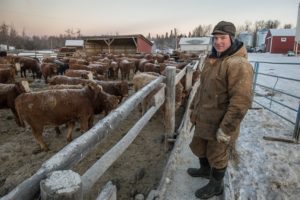 Antibiotic Resistance
Antibiotic Resistance
What is antibiotic resistance? How does it affect animal health?
What is antibiotic resistance?
Bacteria continuously find ways to grow even when an antibiotic is present. This process is known as antibiotic resistance. Every time a new antibiotic is created, bacteria eventually find a way to defeat it. The existence of antibiotic resistance means that more illnesses are becoming harder to treat.
Not all antibiotics are equal!
Some antibiotics are more powerful than others and many of powerful antibiotics are not approved for use in animals in order to reduce the risk of the most important and powerful antibiotics developing resistance. One category of antibiotics (e.g. ionophores) are not used at all in human medicine, and are often used preventatively in animals. This is important because previous experience has shown that when preventative antibiotics are banned and animals get sick, a higher dose of a more powerful antibiotic is required.
See Our PDF to Learn More: DownloadPrint
Journey 2050 Lesson: 1
This resource is a great addition to Lesson 1 – Sustainable Food and Agriculture
SnapAg:
What are GMOs and are they okay to eat? What does organic farming look like? How are animals like chickens or cattle raised?
snapAG is a series of resources that invite students to explore the hot topics affecting the agriculture industry today. Topics range from organics, biotechnology, GMOs, livestock, and more.
Explore what’s trending in agriculture in Canada by browsing the topics here.
Sources available at: https://aitc-canada.ca/en-ca/learn-about-agriculture
snapAg is brought to you by Agriculture in the Classroom Canada and partners.



